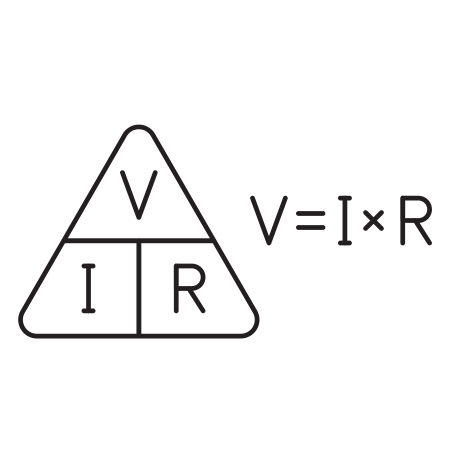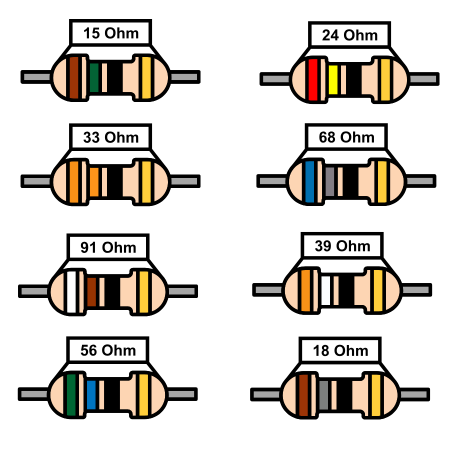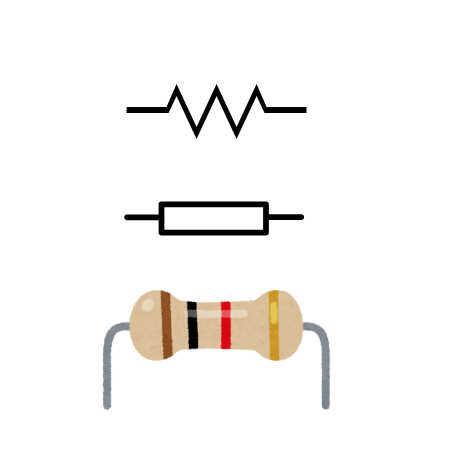Resistors are fundamental components in electronics, and understanding them is essential for anyone learning or working in electronics.
This tutorial explains resistors in detail, covering their function, types, calculations, and practical applications.
What is a Resistor?
A resistor is a passive electrical component that resists the flow of electric current. It controls the current and voltage in a circuit by offering resistance, which is measured in ohms (Ω).
The main function of a resistor is to:
- Limit current in a circuit.
- Divide voltage.
- Protect components from excessive current.
Key Parameters of Resistors
- Resistance (R):
- Measured in ohms (Ω).
- Determines how much the resistor opposes the current.
- Power Rating:
- Indicates how much power (in watts) a resistor can dissipate without overheating.
- Common power ratings: 1/4 W , 1/2 W , 1 W etc.
- Tolerance:
- Specifies the accuracy of the resistor’s value, expressed as a percentage.
- Common tolerances: ±1%, ±5%, ±10%.
- Temperature Coefficient:
- Measures how the resistance changes with temperature, usually expressed in ppm°C.
Resistor Symbol
In circuit diagrams, a resistor is represented by one of these symbols:
American Symbol:
────/\/\/\────
European Symbol:
──────[R]──────
Ohm’s Law
Resistors obey Ohm’s Law, which states:
V=I⋅R
Where:
- V = Voltage across the resistor (volts)
- I = Current through the resistor (amperes)
- R = Resistance (ohms)

Types of Resistors
Resistors come in various types based on material, construction, and application.
1. Fixed Resistors
- Have a constant resistance value.
- Commonly used in circuits for general purposes.
Examples:
- Carbon Film Resistor:
- Made of carbon film.
- Inexpensive and widely used.
- Tolerance: ±5% to ±10%.
- Metal Film Resistor:
- More precise than carbon film.
- Tolerance: ±1% to ±2%
- Wire-Wound Resistor:
- Made by winding a wire around an insulating core.
- Used for high power applications.
2. Variable Resistors
- Allow the resistance value to be adjusted.
- Commonly used for tuning and calibration.
Examples:
- Potentiometer:
- Three terminals, used to adjust voltage.
- Applications: Volume control in audio devices.
- Rheostat:
- Two terminals, used to control current.
- Applications: Motor speed control.
- Trimmer:
- Small, adjustable resistors used for fine-tuning circuits.
3. Special Resistors
- Designed for specific purposes.
Examples:
- Thermistor:
- Resistance changes with temperature.
- Types:
- NTC (Negative Temperature Coefficient): Resistance decreases with temperature.
- PTC (Positive Temperature Coefficient): Resistance increases with temperature.
- Applications: Temperature sensors.
- LDR (Light Dependent Resistor):
- Resistance changes with light intensity.
- Applications: Automatic lighting systems.
- Resistor Networks:
- Multiple resistors in a single package.
- Applications: Digital circuits.
Resistor Color Code
For fixed resistors, the resistance value is often represented using color bands.
Color Code Table
| Color | Digit | Multiplier (10×10^x) | Tolerance |
|---|---|---|---|
| Black | 0 | 10^0 | – |
| Brown | 1 | 10^1 | ±1% |
| Red | 2 | 10^2 | ±2% |
| Orange | 3 | 10^3 | – |
| Yellow | 4 | 10^4 | – |
| Green | 5 | 10^5 | ±0.5% |
| Blue | 6 | 10^6 | ±0.25% |
| Violet | 7 | 10^7 | ±0.1% |
| Gray | 8 | 10^8 | ±0.05% |
| White | 9 | 10^9 | – |
| Gold | – | 0.1 | ±5% |
| Silver | – | 0.01 | ±10% |
How to Read the Color Code:
- First Band: First digit.
- Second Band: Second digit.
- Third Band: Multiplier.
- Fourth Band: Tolerance (optional).
Example:
A resistor with color bands: Red, Violet, Yellow, Gold.
- First digit (Red) = 2.
- Second digit (Violet) = 7.
- Multiplier (Yellow) = 10^4.
- Tolerance (Gold) = ±5%.
Resistance=27×10^4 Ω = 270,000 Ω = 270 kΩ

Resistors in Circuits
Resistors can be connected in series, parallel, or a combination of both.
1. Resistors in Series
- Total resistance: Rtotal=R1+R2+R3+…
- Current through each resistor is the same.
2. Resistors in Parallel
- Total resistance: 1R=1R1+1R2+1R3
- Voltage across each resistor is the same.
Applications of Resistors
- Voltage Division:
- Resistors are used to create voltage dividers.
- Current Limiting:
- Protect LEDs and other components by limiting current.
- Pull-Up and Pull-Down Resistors:
- Used in digital circuits to ensure a known state for inputs.
- Signal Filtering:
- Combine with capacitors or inductors to create filters.
- Heat Generation:
- Used as heating elements in devices.
Common Mistakes with Resistors
- Incorrect Power Rating:
- Using a resistor with a power rating too low can cause overheating.
- Improper Tolerance:
- Not considering tolerance can lead to inaccurate circuit performance.
- Wrong Connections:
- Misplacing resistors in series or parallel configurations.
Practical Tips for Using Resistors
- Use a Multimeter:
- To measure resistance directly and verify the value.
- Check Power Rating:
- Ensure the resistor can handle the power dissipation.
- Color Code Practice:
- Familiarize yourself with the resistor color code for quick identification.
- Spare Resistors:
- Keep a variety of resistor values and types handy for prototyping.
Summary
- Resistors are critical components for controlling current and voltage in electronic circuits.
- They come in various types (fixed, variable, special) and have distinct characteristics like resistance, tolerance, and power rating.
- Understanding resistor calculations (Ohm’s law, series/parallel combinations) and color codes is essential for designing and troubleshooting circuits.
- Resistors are versatile and widely used in applications ranging from current limiting to signal processing.


